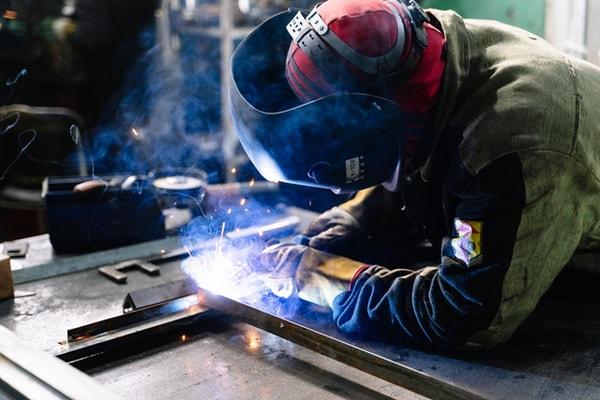Achieving Welding Excellence: Revealing the Tricks of WPS Application and Optimization
In the realm of welding, attaining quality is a quest that rests on the thorough implementation and optimization of Welding Treatment Specifications (WPS) These foundational documents work as the foundation of welding procedures, determining the criteria and treatments essential for generating high-grade welds constantly. Nonetheless, the keys to opening the full potential of WPS lie not just in recognizing its value however likewise in mastering the intricacies of its execution and optimization. By delving into the vital components, methods, difficulties, and best practices related to WPS, a world of welding quality waits for those who are willing to explore its midsts.
Value of WPS in Welding
The Significance of Welding Treatment Specs (WPS) in the welding industry can not be overemphasized, serving as the foundation for guaranteeing consistency, quality, and safety and security in welding procedures. A WPS provides detailed instructions on exactly how welding is to be accomplished, including necessary variables such as materials, welding procedures, joint design, filler metals, preheat and interpass temperatures, welding currents, voltages, traveling speeds, and a lot more. By adhering to a well-defined WPS, welders can maintain harmony in their job, leading to constant weld top quality across various jobs.

Secret Elements of WPS
Reviewing the important elements of a welding treatment specification (WPS) is necessary for comprehending its duty in welding operations. A detailed WPS consists of a number of vital elements that direct welders in achieving high quality and uniformity in their job. One crucial aspect of a WPS is the welding procedure spec, which outlines the specific welding procedures to be used, such as gas tungsten arc welding (GTAW) or shielded metal arc welding (SMAW) Furthermore, the WPS consists of details on the welding materials, such as the kind and requirements of the base steel and filler metal to be utilized. The WPS also specifies important variables like welding specifications, interpass and preheat temperature requirements, and post-weld warmth treatment procedures. Moreover, it consists of details on joint design, fit-up, and any type of special strategies or safety measures needed for the welding procedure. By including these vital elements right into the WPS, welding treatments can be standardized, making certain top quality, efficiency, and safety in welding operations.
Strategies for WPS Optimization

Secondly, training and certification of welding workers according to the specific needs of the WPS is extremely important. Supplying extensive training programs and guaranteeing that welders are accredited to execute treatments laid out in the WPS can result in better welds and lowered rework.
In addition, leveraging modern technology such as welding dig this software application and monitoring systems can help in maximizing WPS. These tools can help in tracking variables, making sure parameters are within specified restrictions, and providing real-time comments to welders, enabling them to make instant changes for boosted weld top quality.
Common Obstacles and Solutions
Facing challenges in carrying out the approaches for WPS optimization can impede welding operations' efficiency and top quality. One typical difficulty is inadequate training or understanding of the welding treatment specs (WPS) among the welding group.
An additional difficulty is the lack of correct paperwork and record-keeping, which is important for WPS optimization. Without clear records of welding criteria, materials made use of, and assessment results, it becomes difficult to identify locations for enhancement and make sure consistency in welding processes. Applying a durable documentation system, such as electronic welding management software, can help streamline record-keeping and facilitate information evaluation for continuous enhancement.
Furthermore, inconsistent welding devices calibration and maintenance can present a substantial difficulty to WPS optimization. Normal equipment checks, calibration, and upkeep schedules ought to be stuck to purely to ensure that welding specifications are accurately managed and kept within the specified tolerances (welding WPS). By attending to these usual challenges with positive solutions, welding operations can improve performance, quality, and total welding excellence
Finest Practices for WPS Execution
To guarantee effective WPS implementation in welding procedures, adherence to sector standards and careful focus to detail are vital. When launching WPS implementation, it is vital to start by extensively understanding the particular welding demands of the task. This entails an extensive evaluation of the welding treatment requirements, materials to be welded, and the ecological problems in which the welding will certainly happen.
Once the demands are clear, the following step is to pick the appropriate welding procedure that lines up with these specs. This includes seeking advice from the pertinent codes and standards, such as those provided by the American Welding Society (AWS) or the International Organization for Standardization (ISO), to make sure conformity and top quality.
In addition, recording the whole WPS execution procedure is essential for traceability and high quality control. In-depth records ought to be kept regarding welding parameters, product prep work, preheat and interpass temperatures, welding consumables used, and any discrepancies from the original procedure. Regular audits and reviews of the WPS can assist recognize locations for enhancement and guarantee continuous optimization of the welding process.


Verdict
To conclude, the implementation and optimization of Welding Treatment Specifications (WPS) is critical for attaining welding quality. By understanding the vital components of WPS, carrying out effective techniques for optimization, resolving common obstacles, and following ideal practices, welders can make sure premium welds and secure working my link problems. It is essential for professionals in the welding industry to focus on the correct execution of WPS to boost overall welding efficiency and accomplish wanted end results.
The Value of Welding Treatment Specifications (WPS) in the welding market can not be overemphasized, serving as the backbone for making certain consistency, quality, and security in welding procedures. A WPS provides comprehensive guidelines on just how welding is to be carried out, consisting of essential variables such as materials, welding processes, joint style, filler steels, interpass and Check Out Your URL preheat temperatures, welding currents, voltages, travel speeds, and a lot more. One crucial aspect of a WPS is the welding process spec, which lays out the specific welding processes to be used, such as gas tungsten arc welding (GTAW) or protected metal arc welding (SMAW) By integrating these vital components right into the WPS, welding procedures can be standard, ensuring high quality, effectiveness, and security in welding procedures.
It is necessary for specialists in the welding sector to focus on the correct execution of WPS to enhance overall welding efficiency and accomplish preferred outcomes.
Comments on “Bonding WPS for Beginners: Beginning with Welding Procedure Specifications”